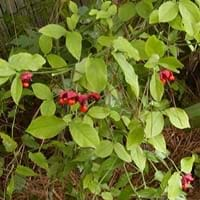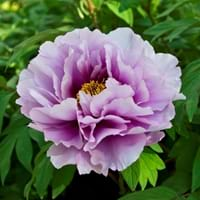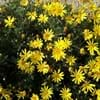Life Span
Perennial
Perennial
Type
Shrub
Flowering Plants, Shrubs
Origin
Northeastern United States, Mid-Atlantic United States, Southeastern United States, South-Central United States
Asia, North America, Southern Europe
Types
Not Available
Aristocrat, Buckeye Belle, Henry Bockstoce , Abalone Pearl, Coral Supreme, Cytherea, Charlie's White
Number of Varieties
Not Available
Habitat
Shady Edge, Woodland Garden Dappled Shade
Hillside, Woods
USDA Hardiness Zone
6-8
3-9
Sunset Zone
3b, 4, 5, 6, 7, 8, 9, 14, 15, 16, 17
A3, 1a, 1b, 2a, 2b, 3a, 3b, 4, 5, 6, 7, 8, 9, 10, 11, 12, 13, 14, 15, 16, 17, 18, 19, 20, 22
Habit
Upright/Erect
Clump-Forming
Flower Color
White, Ivory
Pink, Red, White
Flower Color Modifier
Not Available
Not Available
Fruit Color
Magenta, Orange, Red
Not Available
Leaf Color in Spring
Green
Dark Green
Leaf Color in Summer
Green
Dark Green, Green
Leaf Color in Fall
Yellow, Red, Burgundy
Bronze, Dark Green, Green
Leaf Color in Winter
Not Available
Not Available
Leaf Shape
Lance shaped
Compound
Plant Season
Fall, Winter
Spring
Sunlight
Full Sun, Partial Sun, Partial shade, Full Shade
Full Sun, Part sun
Type of Soil
Clay, Loam
Loamy
The pH of Soil
Acidic, Neutral
Neutral
Soil Drainage
Well drained
Well drained
Bloom Time
Early Summer
Spring, Summer
Tolerances
Drought
Not Available
Where to Plant?
Ground, Pot
Ground, Pot
How to Plant?
Seedlings, Semi-hardwood cuttings
Grafting, Seedlings, Stem Planting, Transplanting
Plant Maintenance
Medium
Medium
Watering Requirements
Average Water Needs, Do Not over Water
Does not require lot of watering, It cannot sustain wet-feet, Keep the ground moist but not water-logged, Needs watering once a week, Prefer drip-irrigation instead of Over-head watering, Water occasionally
In Summer
Lots of watering
Lots of watering
In Spring
Moderate
Moderate
In Winter
Average Water
Average Water
Soil pH
Acidic, Neutral
Neutral
Soil Type
Clay, Loam
Loamy
Soil Drainage Capacity
Well drained
Well drained
Sun Exposure
Full Sun, Partial Sun, Partial shade, Full Shade
Full Sun, Part sun
Pruning
Remove damaged leaves, Remove dead branches, Remove dead leaves
Do not prune during shooting season, Prune to control growth, Remove dead or diseased plant parts, Remove deadheads
Fertilizers
All-Purpose Liquid Fertilizer
All-Purpose Liquid Fertilizer
Pests and Diseases
Red blotch
Botrytis Blight, Leaf spot, Stem spot, Viruses
Plant Tolerance
Drought
Not Available
Flowers
Insignificant
Yes
Flower Petal Number
Single
Semi-Double
Foliage Texture
Medium
Coarse
Foliage Sheen
Matte
Glossy
Attracts
Birds, Deers
Ants
Allergy
Diarrhea, poisonous if ingested
Not Available
Aesthetic Uses
Not Used For Aesthetic Purpose
Beautification, Bouquets, Showy Purposes, Used for decorating walls, fences, gates, hedges, etc.
Beauty Benefits
Not Available
Not Available
Environmental Uses
Air purification
Air purification
Medicinal Uses
constipation, Liver problems, Malaria, Tonic
Cough, Gout, Headache, Heartburn, Kidney problems, Upset stomach, Urinary tract problems
Part of Plant Used
Bark, Root, Seeds
Flowers, Root, Seeds
Other Uses
The powdered bark is believed to eliminate dandruff, Used to make tea in cases of uterine prolapse, vomiting of blood
Showy Purposes, Used as Ornamental plant, Used for fragrance
Used As Indoor Plant
No
No
Used As Outdoor Plant
Yes
Yes
Garden Design
Mixed Border
Feature Plant, Foundation, Mixed Border
Botanical Name
EUONYMUS americanus
Paeonia suffruticosa
Common Name
Strawberry bush, American strawberry bush, Bursting-heart
Peony
In Hindi
Strawberry Bush
Peony
In German
Strawberry Bush
Pfingstrose
In French
Strawberry Bush
Pivoine
In Spanish
Fresa Bush
Peonía
In Greek
φράουλα Μπους
παιωνία
In Portuguese
Morango de Bush
Peônia
In Polish
Strawberry Bush
Piwonia
In Latin
Classic Bush
AGLAOPHOTIS
Phylum
Magnoliophyta
Magnoliophyta
Class
Magnoliopsida
Magnoliopsida
Order
Celastrales
Not Available
Family
Celastraceae
Paeoniaceae
Clade
Angiosperms, Eudicots, Rosids
Angiosperms, Core eudicots, Eudicots
Tribe
Not Available
Not Available
Subfamily
Celastroideae
Not Available
Number of Species
Not Available
Season and Care of Strawberry Bush and Peony
Season and care of Strawberry Bush and Peony is important to know. While considering everything about Strawberry Bush and Peony Care, growing season is an essential factor. Strawberry Bush season is Fall and Winter and Peony season is Fall and Winter. The type of soil for Strawberry Bush is Clay, Loam and for Peony is Loamy while the PH of soil for Strawberry Bush is Acidic, Neutral and for Peony is Neutral.
Strawberry Bush and Peony Physical Information
Strawberry Bush and Peony physical information is very important for comparison. Strawberry Bush height is 90.00 cm and width 90.00 cm whereas Peony height is 76.20 cm and width 61.00 cm. The color specification of Strawberry Bush and Peony are as follows:
Strawberry Bush flower color: White and Ivory
Strawberry Bush leaf color: Green
Peony flower color: Pink, Red and White
- Peony leaf color: Dark Green
Care of Strawberry Bush and Peony
Care of Strawberry Bush and Peony include pruning, fertilizers, watering etc. Strawberry Bush pruning is done Remove damaged leaves, Remove dead branches and Remove dead leaves and Peony pruning is done Do not prune during shooting season, Prune to control growth, Remove dead or diseased plant parts and Remove deadheads. In summer Strawberry Bush needs Lots of watering and in winter, it needs Average Water. Whereas, in summer Peony needs Lots of watering and in winter, it needs Average Water.





